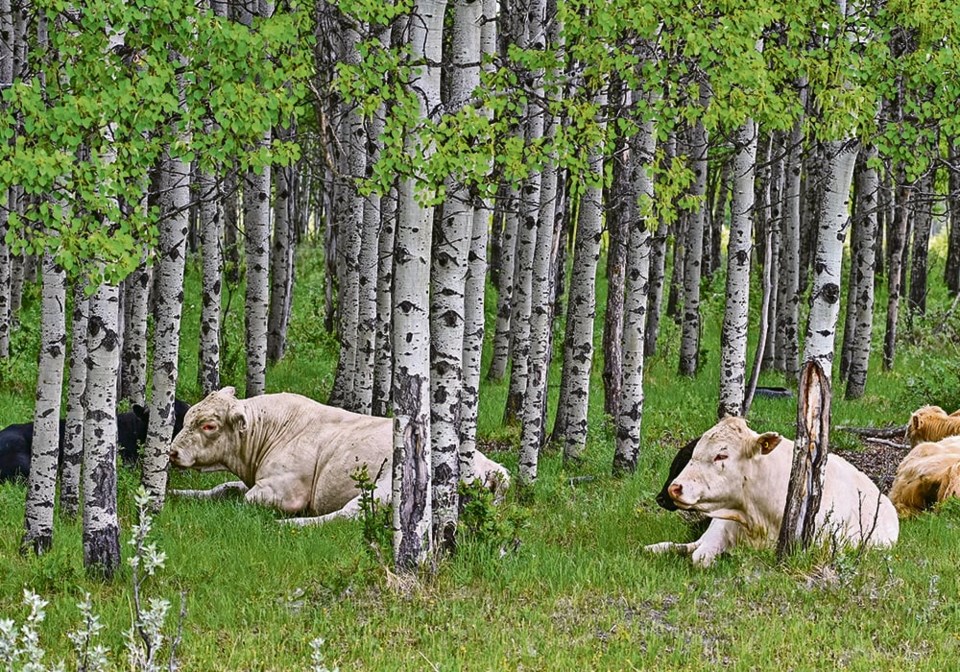WESTERN PRODUCER — Fair market value may not be the best way to determine how conservation easement payments are made, says a study commissioned by the Saskatchewan Stock Growers Association and Saskatchewan Stock Growers Foundation.
The study by Jared Carlberg, agricultural economist at the University of Manitoba, looked at the differences in returns from crops and cow-calf operations in southwest Saskatchewan with a view to taking an income approach to conservation easement payments.
He looked at per-acre returns over different time periods while applying a discount rate for inflation and other factors.
He found that over 50 years, crops would be $508 per acre more profitable than a cow-calf operation.
Tom Harrison, SSGF program manager, said the results aren’t a surprise.
“We’ve known for a few years the cropping sector is more lucrative than cow-calf,” he said.
Term easements are one of the foundation’s goals, rather than the perpetual easements that other organizations offer. The idea is to help the next generation move into the industry and prevent the loss of native grassland through appropriate compensation.
Basic economics dictates that converting land to cropland is attractive.
But Harrison said some poorer, lower-value land is important for biodiversity; for example, land critical for greater sage grouse habitat in southwestern Saskatchewan.
In his report, Carlberg said he has spent his career studying farmland values and returns and, in his opinion, “the entirety of the foregone stream of future cash flows for the term of the easement should be awarded to farmland owners in exchange for granting a conservation easement.”
He said the fair market value system is heavily flawed for three reasons. First, markets are “notoriously thin.” The absence of enough buyers means true value can’t be determined.
The second reason is that most buyers don’t have a good handle on expected future cash flows.
“Empirical research on farmland values typically employs an adaptive expectations approach, whereby the last few years of returns are used to form expectations about future returns,” Carlberg wrote.
Using the recent past to predict a long-term future is not ideal, he said.
The third reason not to use fair market value is that factors other than expected returns can heavily impact the value.
For example, a potential buyer might bid lower for land if it is farther away from where that person currently farms but that has nothing to do with its productive value.
“Or fair market value could be determined by the value of surrounding parcels that were indeed discounted in the market due to the presence of wetlands, etc., the very characteristics that conservation easements are intending to reward!” said Carlberg.
He said estimating the difference in land values under different uses is the only way to capture a conservation easement’s value.
Harrison said eight ranches in southwest Saskatchewan, all with critical habitat designations, participated in a fair market valuation process. A hypothetical scenario was run with one of those to see what a conservation easement payment might be. Lands with perpetual easements in the southwest are devalued about 24 percent, he said.
The 10-quarter ranch was valued at about $1.1 million, meaning a payment of about $270,000.
Harrison said the foundation has to look at what percent of a perpetual easement it would pay for a term. The board has funding and is in discussion about buying a term easement.
Harrison said 15 other ranchers have expressed interest.
In a joint press release, the SSGA and SSGF said more funding for and higher payments from grassland programs could also encourage landowners to stick with grass.
“Whether landowners are looking at term conservation easements or easements in perpetuity, without proper compensation, we will never meet our goals of grassland conservation,” the organizations said.
SSGF chair Ray McDougald said generational transition of ranches is often overlooked.
SSGA President Garner Deobald said he is convinced term easements are the best way to move forward.
“There needs to be a compensation formula or mechanism based on the alternate use value for the land to ensure the landowners are compensated appropriately,” he said.




